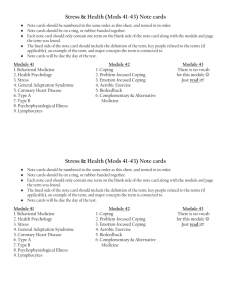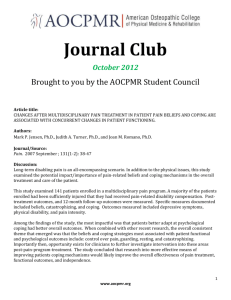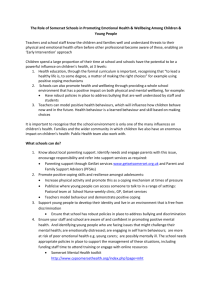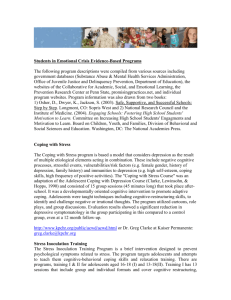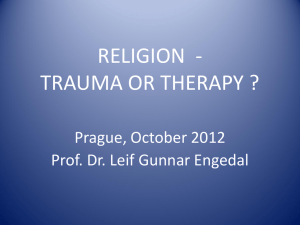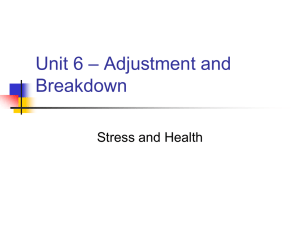Handout 3 (Slide #22): Normal Coping
advertisement
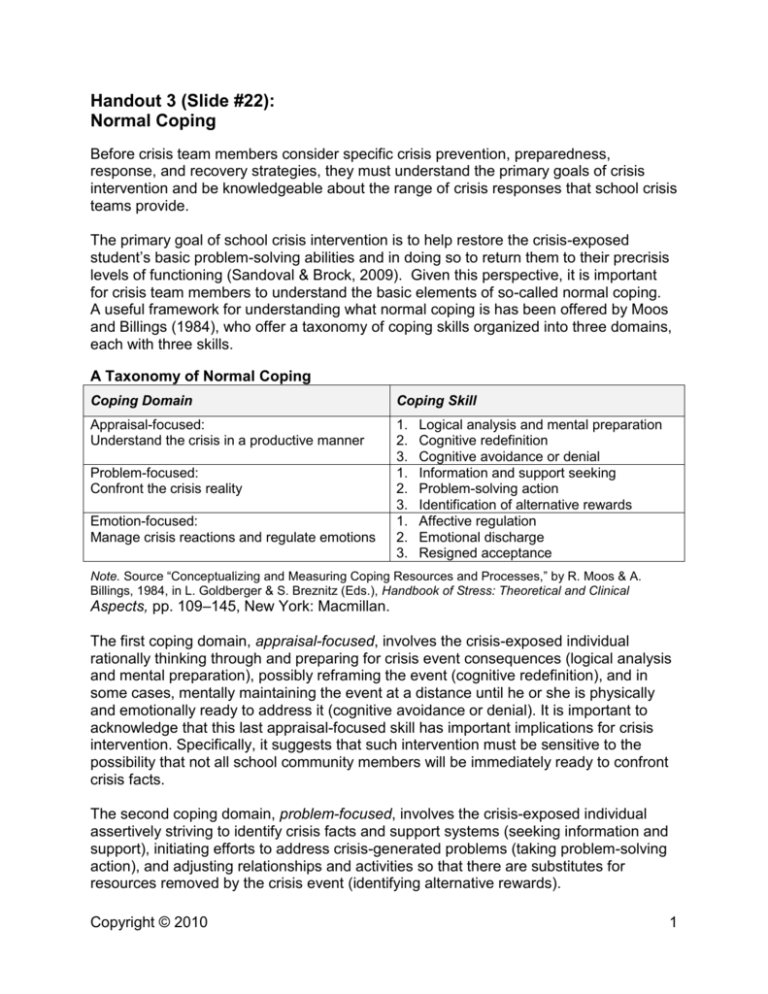
Handout 3 (Slide #22): Normal Coping Before crisis team members consider specific crisis prevention, preparedness, response, and recovery strategies, they must understand the primary goals of crisis intervention and be knowledgeable about the range of crisis responses that school crisis teams provide. The primary goal of school crisis intervention is to help restore the crisis-exposed student’s basic problem-solving abilities and in doing so to return them to their precrisis levels of functioning (Sandoval & Brock, 2009). Given this perspective, it is important for crisis team members to understand the basic elements of so-called normal coping. A useful framework for understanding what normal coping is has been offered by Moos and Billings (1984), who offer a taxonomy of coping skills organized into three domains, each with three skills. A Taxonomy of Normal Coping Coping Domain Coping Skill Appraisal-focused: Understand the crisis in a productive manner 1. 2. 3. 1. 2. 3. 1. 2. 3. Problem-focused: Confront the crisis reality Emotion-focused: Manage crisis reactions and regulate emotions Logical analysis and mental preparation Cognitive redefinition Cognitive avoidance or denial Information and support seeking Problem-solving action Identification of alternative rewards Affective regulation Emotional discharge Resigned acceptance Note. Source “Conceptualizing and Measuring Coping Resources and Processes,” by R. Moos & A. Billings, 1984, in L. Goldberger & S. Breznitz (Eds.), Handbook of Stress: Theoretical and Clinical Aspects, pp. 109–145, New York: Macmillan. The first coping domain, appraisal-focused, involves the crisis-exposed individual rationally thinking through and preparing for crisis event consequences (logical analysis and mental preparation), possibly reframing the event (cognitive redefinition), and in some cases, mentally maintaining the event at a distance until he or she is physically and emotionally ready to address it (cognitive avoidance or denial). It is important to acknowledge that this last appraisal-focused skill has important implications for crisis intervention. Specifically, it suggests that such intervention must be sensitive to the possibility that not all school community members will be immediately ready to confront crisis facts. The second coping domain, problem-focused, involves the crisis-exposed individual assertively striving to identify crisis facts and support systems (seeking information and support), initiating efforts to address crisis-generated problems (taking problem-solving action), and adjusting relationships and activities so that there are substitutes for resources removed by the crisis event (identifying alternative rewards). Copyright © 2010 1 The third and final domain, emotion-focused, involves the crisis-exposed individual managing the emotions generated by the crisis event (affective regulation), venting feelings in a way that brings some relief (emotional discharge), and cognitively attempting to respond to the problem by accepting it (resigned acceptance). References Moos, R., & Billings, A. (1984). Conceptualizing and measuring coping resources and processes. In L. Goldberger & S. Breznitz (Eds.), Handbook of Stress: Theoretical and Clinical Aspects (pp. 109– 145). New York: Macmillan. Sandoval, J., & Brock, S. E. (2009). Managing crisis: Prevention, intervention, and treatment. In C. R. Reynolds, & T. B. Gutkin (Eds.), The handbook of school psychology (pp. 886-904). New York: Wiley. Copyright © 2010 2
